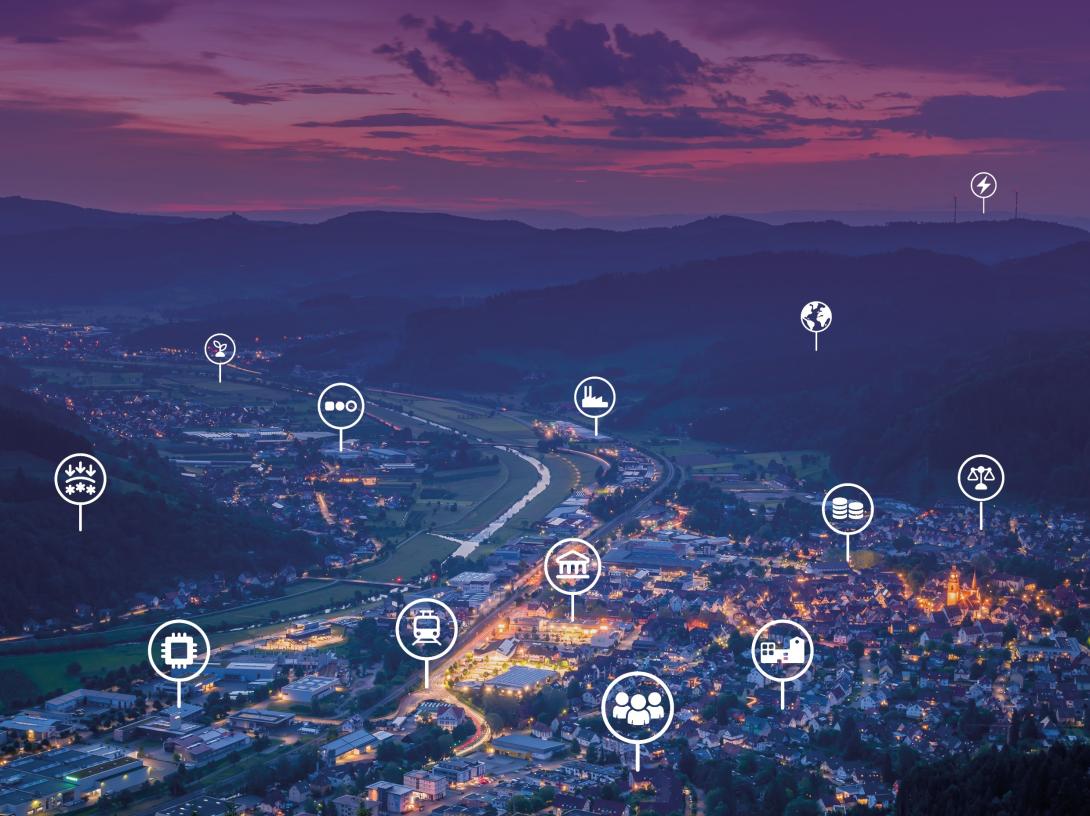Glossary
Glossary


Clean Technologies
Clean technologies are the backbone of a decarbonised economy. It is vital to deploy the most effective climate solutions, and that citizens reap the benefits of green industrialisation.

OVERVIEW:
Progress on clean technologies has been too slow
Progress is evident in public R&I spending and the EU’s policy architecture, following the Industrial Plan. However, private R&I investments remain too low, hindering the long-term competitiveness of the sector.
The development of clean technologies in the EU was found to be too slow, which means there is no change to the progress classification of last year. While the EU research and innovation architecture remained vibrant, with significant public funding, private R&I spending was progressing too slowly in the period assessed. Investment in start-ups was growing, and the manufacturing base for more mature clean technologies continued to increase. However, private finance to these at-scale projects plateaued, risking continued progress.
The EU has a range of policies which support research and innovation, manufacturing, and deployment of clean technologies. The Fit for 55 package creates the market conditions and future demand for clean energy, electric mobility, and other technologies. A range of funds and financial instruments are already in place to support clean technologies. 2023 saw the proposal of the EU’s Green Deal Industrial Plan, a package of measures aimed at European clean technologies. With implementation expected by the end of 2024, their impact on the progress of EU clean technologies is yet to be assessed.
A holistic strategy is required to drive progress in clean technologies. Key actions include prioritising the full implementation of legislative initiatives like the Net Zero Industry Act, to streamline permitting processes and accelerate market entry. Additionally, leveraging mechanisms such as the proposed ‘regulatory sandboxes’ will facilitate the transition of research into market-ready solutions. Above all, addressing the absence of a cleantech investment plan should be a priority to mobilise private and public capital effectively. This should be pursued at the EU level to avoid a fragmentary state aid competition between Member States (MS), such as that seen under the current Temporary Crisis and Transition Framework. Expanding the size and scope of the EU Innovation Fund, expanding the size of Horizon Europe, and leveraging EIB instruments such as guarantees and venture debt should be key pillars of such an approach.
OBJECTIVES
Objectives describe what needs to be achieved in each building block to reach climate neutrality.
Objective
Developing manufacturing capacity & innovation leadership
The steady growth of the clean technology industrial base was hampered by problems of access to finance, slow permitting times, and increased competition from the United States and other jurisdictions. The decline in the performance of the research sector is harder to attribute a cause to, although regular cuts to EU research funding could be a contributing factor.
Clean technology industry added value

This indicator shows past development in the value added in the management of energy resources and the protection of ambient air and climate.
The data show an annual increase of 4.6% between 2015 and 2020. This development was heading in the right direction but should accelerate in the future.
Value added in the environmental goods and services sector in the management of energy resources (CReMA 13) and protection of ambient air and climate (CEPA 1), deflated by the Producer Price Index (PPI)
Index of eco-innovation patents

This indicator shows past development in eco-innovation patents.
The data show an annual decrease of 1.2% between 2017 and 2022. This development was heading in the wrong direction.
Number of patent applications filed under the Patent Cooperation Treaty in the field of environment-related technologies, climate change adaptation technologies, and sustainable ocean economy invention. The indicator is indexed to the year 2013.
ENABLERS
Enablers are the supporting conditions and underlying changes needed to meet the objectives in a given building block. They are the opposite of barriers or inhibitors.
Enabler 1
Fostering research excellence
Progress on maintaining EU research excellence in the clean technology sphere remained robust over the period assessed but is threatened by a lack of finance. Although eco-innovation patent activity was down, the European clean technology research environment remained active. However, while researchers continue to push the boundaries of the state of the art, they do so in an environment that is increasingly financially constrained.
Index of Eco-Innovation related publications

This indicator shows past development in the index of eco-innovation related publications per million inhabitants.
The data show an average annual increase of 4.0% between 2017 and 2022. This development is on track, as the indicator’s value nearly doubled over the whole 2013-2022 period.
Number of scientific publications in the Scopus database with the following keywords in title or abstract: eco-innovation, energy efficient/efficiency, material efficient/efficiency, resource efficient/efficiency, energy productivity, material productivity, and resource productivity. The indicator is indexed to the year 2013.
Public funds for environmental and energy R&D

This indicator shows past development in funds allocated to environmental and energy R&D by governmental sector, relative to GDP [%].
The data show an average annual increase of 5.6% between 2016 and 2021, this development is on track.
Financial assets dedicated to R&D activities related to energy, deflated by Producer Price Index (PPI) and relative to GDP.
Enabler 2
Bringing innovation to market using private resources
Private investment in R&I was progressing far too slowly through 2023, with companies unwilling to take a risk on future innovations with uncertain returns – even with some Member States subsidising such investment. However, once a prototype has left the lab and is being brought to market by a start-up or other small-scale innovator, the financing landscape looked more promising. Private early-stage finance, or ‘seed’ and ‘series A’ finance in start-up terminology, was on track.
Private energy R&I spending

This indicator shows past development in private energy R&I spending, relative to GDP [%]. No benchmark is available from an official EU source.
The data show an average annual increase of 1.9% between 2014 and 2019. This development is far too slow.
Financial assets dedicated to R&I activity related to energy allocated by private sector relative to GDP.
Early-stage private cleantech investment

This indicator shows past development in early-stage private investment in clean technologies [EUR].
The data show an average annual increase of 47% between 2018 and 2028. This development is on track.
Financial assets invested in the clean technology sector by private investors
Enabler 3
Increasing clean technology uptake
The most significant contribution to European decarbonisation by clean technologies is represented in the manufacturing and deployment of the most mature and marketready solutions, with progress having been mixed in recent years. The battery manufacturing capacity may be at risk as scale-up finance for clean technologies shows signs of reaching a plateau, with scale-up finance for clean technologies slightly declining over the past two years. Rising interest rates, difficult economic conditions, and the increasing attractiveness of the US-American market are all contributing factors to this trend.
Share of green public procurement

At present, there are no EU-wide aggregated data on green public procurement (GPP) as a share of total public procurement.
This indicator looks at the share of financial resources distributed in public procurement procedures in total financial resources distributed through public procurement, which take into account the environmental impact of purchased goods and services .
Cleantech scale-up finance

Private finance for larger scale, more mature cleantech projects has hit record levels in recent years, reaching a record of €8.8 billion in 2021. However, since then, the indicator shows sign of hitting a plateau, with 2023 investment levels slightly declining down to €7.5 billion. Rising interest rates and the increasing attractiveness of the American market are contributing factors to this trend.
Annual private investments in late stage cleantech projects (Series B+ and Growth Equity).
Battery manufacturing capacity

Europe’s domestic battery manufacturing capacity has increased rapidly, from 44Gwh/year in 2021 to 227Gwh/year in 2023. The successful completion of Gigafactory projects across the EU (such as Northolt in Sweden and LG Energy in Poland) is the clear driver of the trend.
Annual growth of the battery manufacturing capacity within the EU27.



